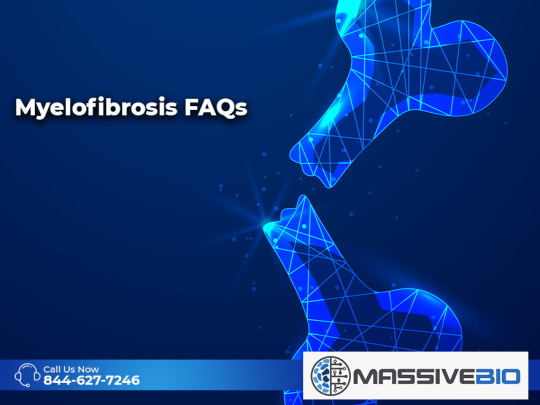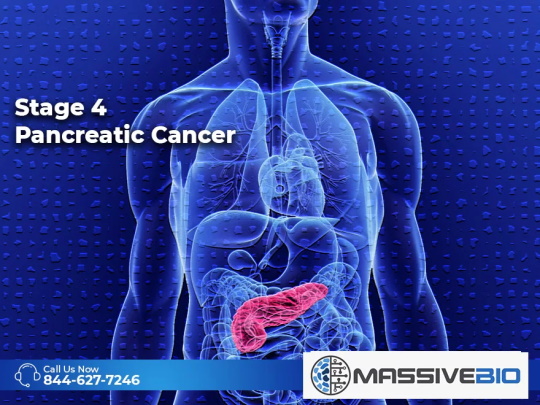What is myelofibrosis?
Myelofibrosis is an uncommon bone marrow cancer that disrupts the body’s normal production of blood cells and causes scarring in the bone marrow. In a healthy body, stem cells in the bone marrow become either white blood cells, red blood cells, or platelets. In myelofibrosis, mutated DNA in the stem cells cause the body to instead produce immature blood cells, called blasts, that do not become the proper blood cells. The body will instead underproduce red blood cells, and overproduce white blood cells, eventually leading to complications. There are different mutations associated with myelofibrosis, but the most common is the JAK2 mutation.
What is primary vs. secondary myelofibrosis?
Myelofibrosis can develop in two different ways. Primary myelofibrosis is when myelofibrosis develops on its own. Secondary myelofibrosis happens when it develops due to another bone marrow disorder such as essential thrombocythemia (when the bone marrow produces too many platelets) or polycythemia vera (when the bone marrow produces too many red blood cells leading to a thickening of the blood). Knowing which type of myelofibrosis, you have will help in deciding treatment options. Learn more about the two types of myelofibrosis from Memorial Sloan Kettering Cancer Center.
What are the symptoms of myelofibrosis?
Myelofibrosis is caused by a disruption in normal blood cell production, and this can lead to a variety of issues, each with their own symptoms. The decrease in red blood cell production leads to anemia. Symptoms from anemia include fatigue, weakness, and shortness of breath. Disruption to platelet production leads to easy bruising and bleeding. Disruption to white blood cell production leads to an increased chance of infection by weakening the immune system. Other symptoms of myelofibrosis may include: pain below your ribs on the left side (due to an enlarged spleen), fever, night sweats, and bone pain.
What are the different myelofibrosis risk levels and how does that change my treatment?
Low-Risk Myelofibrosis: Many people do not experience symptoms from myelofibrosis for years. This is considered low risk. Patients with low-risk myelofibrosis may not require immediate treatment. Instead, they will be closely monitored by their doctor and have regular check-ins until symptoms present.
Immediate-Risk Myelofibrosis: Patients presenting mild to acute symptoms fall into the immediate risk category. Treatment at this stage includes managing and trying to ease the symptoms. This may include treatments like blood transfusions or taking the drug thalidomide to help with severe anemia, or treatments like Ruxolitinib (a drug therapy) targeted at reducing the size of an enlarged spleen, stopping the growth of malignant cells, and blocking the signals that cause cancer cells to multiply.
High-Risk Myelofibrosis: Patients with high-risk myelofibrosis will need a more aggressive treatment plan, such as a splenectomy (spleen removal), or to consider a bone marrow transplant. However, these are not first-resort solutions.
What are the most common treatments for myelofibrosis?
The most common treatments for myelofibrosis are targeted at immediate-risk patients to help with symptoms of anemia or having an enlarged spleen.
Treatments for anemia include:
- Blood transfusions to increase red blood cell counts
- Androgen therapy to promote red blood cell production
- Thalidomide drug therapy to both improve blood cell count and relieve an enlarged spleen
Treatments for an enlarged spleen include:
- Targeted drug therapy like the drug Ruxolitinib (Jakafi) that focus on the JAK2 gene mutation to help decrease spleen size, stop the growth of malignant cells, and block the signals that cause cancer cells to multiply
- Chemotherapy to kill cancer cells
- Spleen removal if it becomes too large and causes other complications as a result
- Radiation therapy to kill cancer cells and reduce spleen size if removal isn’t an option
What are myelofibrosis treatment side effects?
Each treatment comes with its own risk factors and side effects.
Anemia treatments:
- Androgen therapies: risks include liver damage and masculinizing effects in womenDrug therapies: carry a risk of serious birth defects.
Enlarged spleen treatments:
- Drug therapies: using Ruxolitnib carries a host of side effects, but the most common include fatigue, body aches, and a flu-like feeling.
- Spleen removal: risks include infection, excessive bleeding, and blood clots. Patients also sometimes experience liver enlargement and an abnormal increase in platelet count after the procedure.
What are my other options?
Clinical cancer research is an ever-growing field. There are over 400 oncology clinical trials currently running. For patients who have not found success using drug therapies, there is a clinical trial that might be another option. Some patients in a clinical trial that uses Ruxolitinib have found success by combining it with Parsaclisib. Find more information about how to enter this clinical trial here.
When should I consider a clinical trial?
Clinical trials exist for every cancer stage. It is worth considering clinical trials from the moment of diagnosis to make sure you are receiving the most advanced care and treatments at any stage in your cancer.












